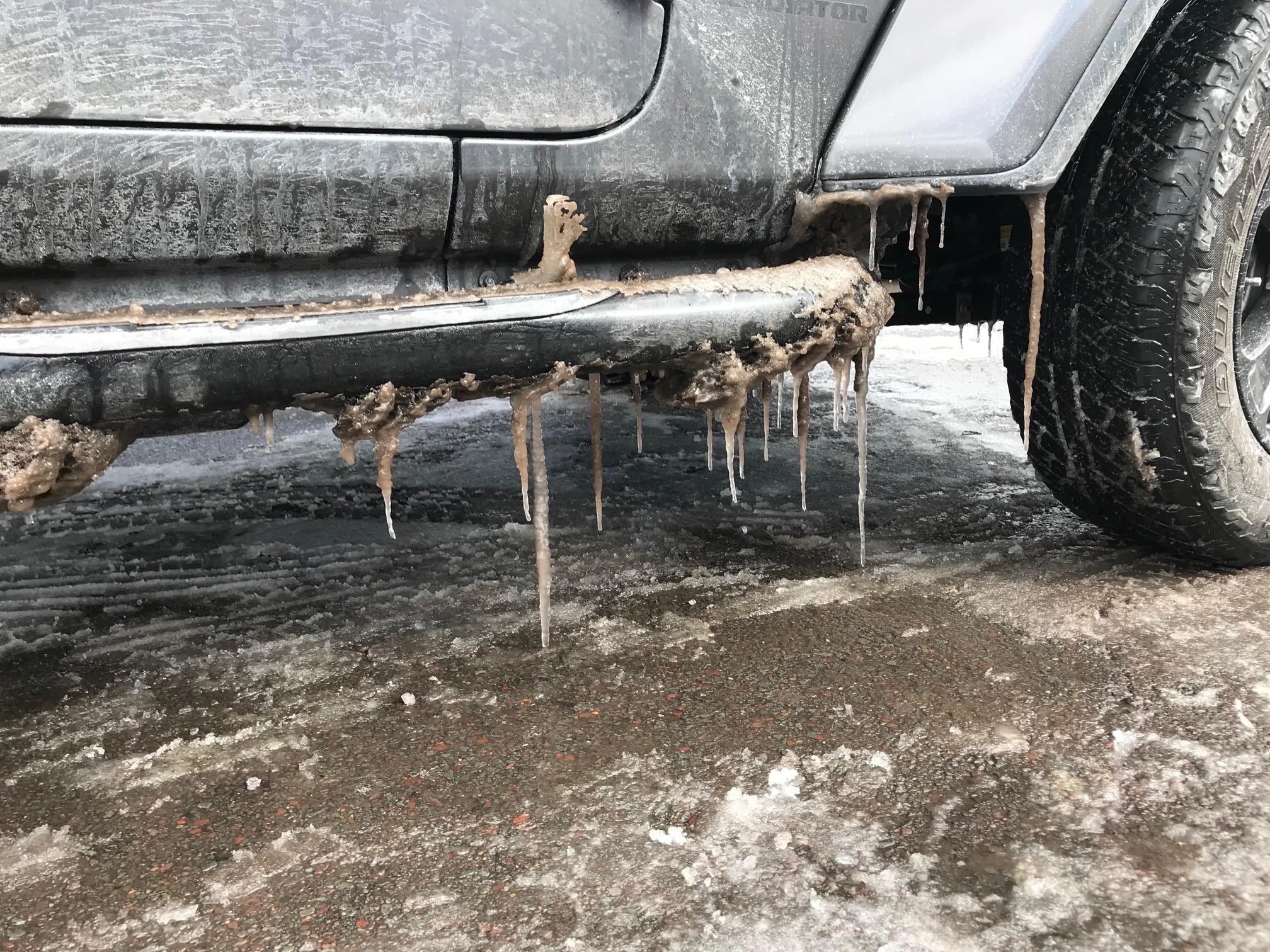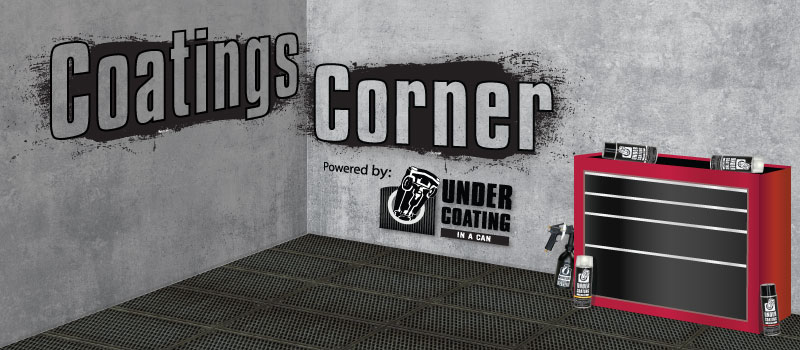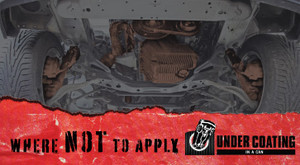Anti-Icing Brines are destroying your vehicle!
By on Oct 6th 2021

Ever notice those grey lines on a highway during winter months? Living in the Northeast you know what this could mean before you even turn on the six o’clock news. A winter storm is imminent, and driving is about to become treacherous – and you can guarantee that the state or local government is treating the roads with salt brines to help keep drivers safe. These salt brines are very effective at keeping roads from freezing over, but they are extremely harmful to your vehicle’s undercarriage. But have you ever wondered what exactly those brines consist of?
Different Methods for Treating Icy Roads
Let’s talk about how brines have become the primary treatment for icy road conditions. As I mentioned earlier, living in the Northeast, we have seen our fair share of winter storms. Everything from sub-zero temperatures to several feet of snow being dropped in a few hours; we have seen it all. As a kid, I remember our local road department simply putting down coal ash and cinders just so vehicles wouldn’t get stuck. This method was somewhat effective as it provided temporary traction that eventually broke down, but it didn’t necessarily “treat” the roadway.
After that, we saw salt crystals being used. Growing up near a train yard I would see train car upon train car deliver large quantities of salt crystals throughout the summer months, creating a mountain of salt that would be used to treat the roads throughout the winter. Salt crystals are certainly more effective than cinders since they did provide some traction but more importantly, they melted the snow and ice.
This method is still used today but does have some downsides. Many of the salt crystals simply bounce to the side of the road upon being spread wasting both time and money and the crystals are only effective when they come in contact with snow and ice to “activate” them.
Additionally, there are environmental concerns with the over-use of salt crystals that are washed away into our fresh waterways. The Michigan Department of Transportation determine that 40% of rock salt bounced to the side of the road and did nothing at all. This means salt crystals definitely aren’t effective as a pre-treatment before a storm.
This takes us to brines. A very popular brine solution is a mixture of water and salt crystals. This mixture is typically 24% Sodium Chloride (Salt) and 76% Water. When you dissolve the salt crystals down with water you can now use it as a pre-treatment before a storm.
It goes down as a liquid but dries and sticks to the road surface. Those grey lines you see on the road before a storm are the brine solution after it has dried. It will reactivate as the storm begins taking it back to its liquid state and preventing the road from icing as long as the road surface temp is above -6 degrees F.
In cases where surface temperatures do get below -6 degrees F, a brine solution of Magnesium Chloride is an option. Magnesium Chloride is very effective at lower temperatures, but it has also been found to be corrosive to concrete road surfaces. For treating concrete road surfaces at lower temperatures, Calcium Chloride seems to be the salt brine of choice.
So how is this “destroying” your vehicle?

Remember, these brines were developed to pre-treat roadways before a storm. They go down wet and then dry. When the brine is made wet again from the rain, snow, or ice it is reactivated and prevents the road from freezing. When we drive over the wet brine it splashes up onto the underbody of your vehicle and creeps into every crevice it can find; this corrosive solution sits on the metal surfaces that make up your vehicle’s underbody, rotting it from the core.
Now the main purpose of this salt brine is that it is very sticky and stays in place on the road surface. Unfortunately, they attach to your vehicle in the same way. Some municipalities are even testing organic solutions such as beet juice, pickle juice, and even beer waste that are added to road salt to help make it even more tenacious.
To add to the challenges of your vehicle’s underside, the next storm or even a humid day can once again reactivate the brine allowing it to spread more and creep further into those hidden crevices to cause even more damage. And if you think you do not have to worry about humidity in the winter you are wrong.
Magnesium Chloride Brine Solutions only need 20%-30% humidity to re-liquefy and Sodium Chloride needs 70%. Of the two brines, Magnesium chloride is much more corrosive.
Unfortunately, due to the effectiveness of these salt brines keeping people safer on the roads and helping to protect the environment from salt over-usage, our vehicles are going to have to pay the price.
Luckily for you, Undercoating in a Can has multiple products for you to fight these highly corrosive brines. Our "Original" Black Wax and Clear Wax will give you 5 years of protection when it is applied to a properly prepared and clean substrate. You can go over rust with the wax products but be sure to knock off anything loose. The wax is also great for cavities, like inside body panels and cross-members. These are areas you can not see, and they may be corroding from the inside out.
Our Rubberized coating will give you 3 years of protection and is best used on clean, rust-free substrates.
Finally, our oil-based Clear Fluid Coat can is an annual undercoating. Clear Fluid Coat is gel-like and stays in place as it is applied to allow the use of less product to cover a given area over other film fluid type products on the market. It migrates into crevices pushing out moisture providing corrosion protection for up to 1 year. Under Coating in a Can always recommends you inspect your vehicle periodically for rust and corrosion and apply touch up as needed.
Sources:





